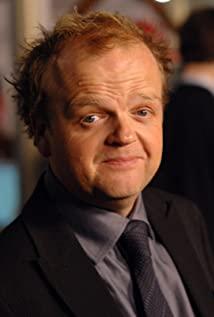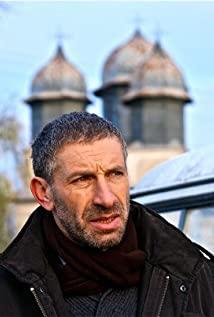Wedge
was written by the Belgian cartoonist Hergé, and the image of the Chinese appeared very early. In the groundbreaking work Tintin in the Soviet Union, two Chinese people with braids became the executioners of the persecution of Tintin. Among them, the Chinese still remained. With the braids in the Qing Dynasty, the images presented are all barbaric and ignorant without exception. Two years later, the third film, Tintin in America (Tintin in America), the image of the Chinese became even more unbearable. In the story, Tintin and Bai Xue met two Chinese people with pigtails, and Bai Xue was worried that he would become a The two villains had a meal on their plate, but it turned out that they sank the tied penis into Lake Michigan. These heinous faces became the images of early Chinese appearing in "The Adventures of Tintin", thus illustrating the reflection of the Chinese at that time in the author's mind. Hergé later admitted in an interview with reporters: "(At that time) came to me. It is said that there are only some inhuman residents living in China. They have Mongolian pleated eyes, are extremely cruel, eat bird's nests, leave pigtails, and sink children into rivers.
I was influenced by accounts of the Boxer Movement, which focused on the brutality of the yellow race, and that had a great influence on me. "Actually, it wasn't just Hergé. Because of the blockage of information channels at that time, coupled with the inherent bitterness in the hearts of Westerners, these factors all resulted in a misinterpretation of the image of the Chinese people. Not only China, but before that, the countries that Tintin visited and his The people of those countries that I met often resembled the usual caricatures of the 1920s and 1930s; the Bolsheviks were brazen, the Africans were backward and superstitious, the American capitalists looted without restraint, and even the Amerindians whom Hergé loved. It was portrayed as being extremely naive and easy to be deceived. For Hergé's creations at that time, on the one hand, he was shackled by information channels, and on the other hand, because of this occlusion, he was biased in shaping his position. When creating Tintin in the Soviet Union, the only reference book on hand was "Moscow Behind the Veil" by Joseph Douyet, and the rebuke of the Soviet system in this book also became Hergé's first reference when drawing cartoons. The subjective factor brought in by the machine is also one of the shortcomings of Hergé's early creation methods.
Turning - the blue of the lotus
From "Tintin in the Soviet Union" to the fourth "Cigars of the Pharaoh", Hergé continued to create similar forms - without preconceived plot development, fortunately he was good at improvising, jumping The way it goes from one scene to the next makes up for it to some extent, and by Hergé's own admission, up until The Blue Lotus, the story was nothing more than a series of gags and some suspense. It's just a mix of factors, with no prior thought and construction at all. This situation changed until the arrival of a person, a Chinese. After finishing "The Pharaoh's Cigar", Hergé announced in the newspaper that Tintin was about to embark on a trip to the Far East, when he received a letter from Father Rabe Gosse of the University of Leuven, roughly saying: "I He is the guiding priest of the Chinese students at the University of Leuven. Ding Ding is just going to China. If you want to adopt the traditional way of expressing China by Westerners, if you want to add a Qing Dynasty braid to them, a braid representing slavery; if you put They are portrayed cunningly and brutally; if you are going to show Chinese torture, you are going to hurt my students brutally. So better be careful: know more about the situation!" Obviously the attitude of this letter is superficial, because the previous "Ding Ding" The biased descriptions of the Chinese in "In the Soviet Union" and "Tintin in the Americas" aroused criticism and dissatisfaction from readers. The four hypothetical "ifs" questioned Hergé's original intention in writing. At the same time, Zhang Chongren, a Chinese student studying in the Advanced Oil Painting and Sculpture Department of the Royal Academy of Fine Arts in Belgium, also received a letter from the priest, which said: "Mr. Zhang, there is a young Belgian serial artist named Hergé, who To send 'Ding Ding' to China, it is necessary to collect data to describe the situation in China, but he lacks relevant reference materials such as words, pictures and books, so I will introduce you to him and ask you to visit him." With the help of Father Gossy, Zhang Chongren walked into Hergé's studio one Sunday afternoon. He was three months younger than Hergé, and he was 22 years old at the time.
No one would have imagined that the encounter brought about by chance would become a friendship between the two artists that lasted for half a century, which also left a laudable story in the history of Sino-Belgian exchanges. Because the story of "Pharaoh's Cigar" is not really over, Tintin, who came to Shanghai, has to start a new adventure, while Hergé and Zhang Chongren meet every Saturday afternoon to start working together to create a new story. - "Blue Lotus".
Zhang Chongren told Hergé that "Blue Lotus" should reflect a real China. He not only told Hergé about many Chinese cultures, but also suggested Hergé to use Chinese ink to create with line drawing. He said that Chinese painting The lines of the book are the language of life, the language that can be appreciated by the widest range of readers. He also specially gave Hergé a "Map of the Mustard Seed Garden". Indeed, the birth of "Blue Lotus" became the joint creation of the two. All the Chinese characters in it were written by Zhang Chongren, and many scenes of the market were also drawn by him based on the real scene of Shanghai. With the help of Zhang Chongren, Hergé's impression of China gradually became clear. This country is very different from what he saw in newspaper clippings. Zhang planted an indelible fascination with China in his heart. Culture opened to him, and a long-standing Chinese complex was rooted here. In order to repay, Hergé painted Zhang Chongren as Tintin's best Chinese friend in "Blue Lotus". The real customs of China were introduced to Tintin, and they not only became good friends, but Zhang also became a bridge between Tintin and Chinese culture. The drawing of "Blue Lotus" was an important change in Hergé's overall creative career. He began to face all this with the mentality of a creator. He said: "I discovered a civilization that I didn't understand at all, and at the same time I also realized a kind of responsibility. From then on, I began to search for information and began to pay attention to those countries and local residents that Tintin was going to, which was worthy of my readers. "Beginning, I began to draft the actual script. "Blue Lotus" marked the beginning of my 'documentary' era! For me, bringing Tintin to a real Chinese environment is simply heart-warming." From an individual perspective Speaking of which, Hergé started the last new direction of comic creation. He paid more attention to the collection and use of materials, in order to reflect the reality of the scenes in the works.
Tintin's journey to Asia was serialized in "20th Century Friends" in August 1934. It was also from this time that Hergé's paintings were mixed with unique personal characteristics. In "Blue Lotus", Gibson chased a rickshaw. When he was married, the Chinese slogan behind him protested: "Fight to imperialism!" Such a strong point of view, for example, became a kind of guideline in Hergé's later works. The clear-cut position is the difference between "The Adventures of Tintin" With other comics, in the author's own words: "I discovered civilization and culture that I didn't understand before, and at the same time I began to realize a certain responsibility. It was from that time, in order to be honest and responsible to the readers, I began to Dedicated to collecting information and documents, I started to be really interested in the countries where Tintin was going and the people in those countries."
At that time, the publication of "Blue Lotus" exposed the ambition and brutality of Japanese imperialism to invade China. The cartoon's heavier responsibility, merciless criticism and political satire appeared in a Catholic newspaper's Children's Weekly, which was unexpected. As a result, a Belgian general severely criticized Hergé's pro-China stance, and the Japanese diplomat in Brussels protested to the Belgian Foreign Ministry, which inadvertently corresponds to the Japanese in the League of Nations that Hergé mocked in the album. representative. It can be seen from the above examples that Hergé in "The Blue Lotus" is a precious turning point in both painting technique and creative standpoint, and the person who made such a change in him is undoubtedly Hergé's whole life. My friend Zhang Chongren later said about Zhang Chongren in an interview with reporters: "Because of him, I have a better understanding of the meaning of friendship, the artistic conception of poetry and the meaning of nature. This is an outstanding young man! He made me discover and fall in love with China. Poetry and Chinese literature. They pay attention to 'character', the wind of inspiration, the bone of imagery. For me, this is a great revelation." The "Blue Lotus" opened a door to China for Hergé, not because of Zhang Chongren's It was closed after leaving. In October 1935, Zhang Chongren completed his studies in Belgium. After saying goodbye to his good friend Hergé, he happily set out on his way back to China. No one expected that it would be 46 years since the separation...
Sublimation - the purity of Tibet White
In an interview, a reporter asked: "Do you want to visit the Soviet Union?" Hergé replied: "Yes, I also want to go to China...especially China, which has always attracted me. From "Blue Lotus" At the beginning, I was officially invited. But I can't leave the job at hand. I may go soon. My friend Zhang Chongren has already started teaching me Chinese. One day, it will definitely come in handy! I may still go Japan, I also have some friends there. But Japan is not that attractive to me. The Chinese are more interesting, more optimistic, more open." The publication of "Blue Lotus" has received positive responses in many places, especially In China, the host of the story, Soong Meiling sent an invitation to Hergé, but unfortunately the invitation did not come to fruition, but Hergé's nostalgia for China was still deep, as well as his longing for his friend Zhang Chongren. For a long time later, Hergé asked about Zhang Chongren everywhere, but he never responded. At that time, his private life was also in confusion. Hergé was swept away by the studio's young assistant, Fanny Chongren. Vlaminck was deeply attracted, and his 28-year marriage with Germana was facing disintegration. During this period, his mental state was on the verge of collapse, because of distressed nightmares, "At that time, I was experiencing a real the crisis of the 1990s, my dreams are almost always white. These dreams bother me so much that I take notes about them, and I remember one of them was this: I found myself in an enemy that looked like a tower, a tower formed by a continuous slope It is composed of fallen leaves, covering everything." The scene in the dream is directly projected in the work, "Tintin and Tibet" (Tintin in Tibet) Tibet) is also full of barren whiteness. In the story, Tintin dreamed that Zhang Chongren was killed in a plane crash in Tibet. In order to save the life of his friend, Tintin set foot on the road again. "Titin and Tibet" is the only time in all the series that there is no villain in the story. On the contrary, it is full of warm feelings of friendship and rescue, which is also the author's own realization in reality. The psychiatrist told him to stop working, but he did not listen to the expert's advice. This insistence and stubbornness were projected in the work: everyone thought that Zhang was dead, but Ding Ding was determined to save him. This is Hergé's answer to the questions that will engulf him. Whether facing the real problem or the plot of the story, he gives a firm answer. He divorced his wife and began to live with Fanny. The Tibet adventure was extremely important to him personally, but it was the catalyst in his life that made the story surpass "The Secret of the Unicorn" as his favorite adventure story. It is not difficult to see that this time, Tintin put aside his previous fearless spirit for the time being, and began to express his emotions frankly. For example, when he heard the news of Zhang's death, his tears welled up in his eyes. Tears welled up in my eyes for the second time after I shed tears in the farewell.
It is worth mentioning that in the comics, Tintin picked up a yellow scarf in the snow-capped mountains, believing that this was the signal left by Zhang, and insisted on finding Zhang's whereabouts. Today, decades later, we see an identical yellow scarf in the exhibits listed in the Zhang Chongren Memorial Hall. I don’t know if it is fate or coincidence. There is some kind of close connection between the time and space in today’s time and distant stories. Tintin in Tibet is regarded as the second major turning point in Hergé's creative path after The Blue Lotus. He himself admitted: "I gave up the full armor of a serial artist, without 'bad guys', without weapons, There is no war, except war against man himself and the enemy. These settings of mountains, snow and glaciers symbolize the pursuit of ideals and purity. But to me, these are all unconscious. Later, others let me smell These. From Tintin in Tibet, we found a core theme, which is to let the subconscious speak.” Because of this, Tintin in Tibet is also the first work that marks Hergé’s break with tradition.
In the ending
story, the friendship between Ding Ding and Zhang Chongren was mentioned twice, and Zhang became the best friend of Ding Ding. But in reality, due to the war and the movement, Hergé has always lost contact with Zhang Chongren. In May 1973, Hergé visited Taiwan, and the invitation 34 years ago finally came true. This time, he felt the Chinese culture he loved personally. , and the more important thing is to find the news of Zhang Chongren. At that time, Hergé asked the secretary of the Belgian embassy. According to Zhang Chongren's foreign name "Tchang-Jen", the secretary wrote the word "Zhang Zhongren" according to the sound, so in "Ding Ding in Tibet" The name "Zhang Zhongren" is engraved on a large stone on page 30. After many rounds, the two finally reconnected in 1975. Six years later, Zhang Chongren was invited by Hergé to start a trip to Europe. Brussels Airport, March 17, 1981. Hergé, the little painter at that time, was already a world-class cartoonist, and the little international student at that time also became a world-renowned sculptor. 46 years later, the two masters here and now hug each other tightly. The two of them are both old men, and their thousands of words mixed with thousands of sorrows and emotions were all recorded by the camera at the scene.
At that time, Hergé was already seriously ill, but he was determined not to let Zhang Chongren stay in the hotel, and insisted on asking his friends to stay at home. Because of the popularity of cartoons, Zhang Chongren has long been a household name in Europe. The visit caused a huge sensation. The Belgian king and ambassador came to entertain and meet, and Queen Fabiola personally visited Hergé's studio. During the three months in Europe, in order to commemorate the friendship between the two, Zhang Chongren devoted his enthusiasm to the sculpture art he was best at, and created a bronze head of Hergé. In the local area, the friendship between the two Chinese and Belgian artists has been passed down as a good story. Hergé wrote in a letter to Zhang Chongren: I am grateful to you not only for the great help you gave to my creation at that time, but also for the fact that you will My life took a new direction - it was you who introduced me to China after Marco Polo, her civilization, her ideas, her art and her artists. Two years later, Hergé passed away, and people will always miss this great comic artist. When the French government was preparing to build the world's largest comic strip museum, it commissioned Zhang Chongren to enlarge and recreate the bronze statue "Hergé". The giant head of Hergé standing in Angoulême stands in the square of the World Comic Book Museum in Angoulême, while the prototype is collected in the Zhang Chongren Memorial Hall, which seems to be maintaining this friendship that spans more than 70 years and spans 9,000 kilometers.
View more about The Adventures of Tintin reviews











